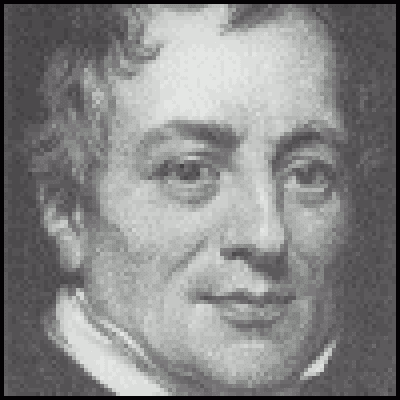
Arguably the greatest economist of his time, David Ricardo was born into a Jewish family in east London. He made his fortune in the City's emerging financial quarters before working out his theories of political economy, developing, for instance, ideas of gains from trade and a theory of distribution of factor returns that remain influential. In his thorough application of comparative static ways of thinking to the analysis of economic equilibria he has been said to have "literally invented the technique of economics."
Ricardo was born at 36 Broad Street Buildings, near to the current Liverpool St station - the site is at the south-east corner of the current UBS Investment Bank building at 100 Liverpool St. His family moved when he was very young to nearby 1 Bury St - the road still exists and the house was on the inner corner of the current bend (adjacent to the award-winning "gherkin" shaped Swiss Re headquarters). He would have worshipped at the nearby synagogue which can still be seen in Bevis Marks. His family later moved out to Old Ford, Bow Town, now part of East London. Temporarily estranged from his family as a consequence of marrying a Quaker and himself converting to Unitarianism, he moved to Lambeth, living at 2 Brooks Place, Kennington - the road no longer exists but the site is on the west side of the current Kennington Road roughly opposite the current junction with Windmill Mews. Their marriage was in the church of St Mary's Lambeth. He later moved a short distance to 7 and then 5 New Buildings, Kennington Place - on the site of the current Stannary St. He later moved to a house at New Grove, Mile End, again in East London, at a site now occupied by St Clement's Hospital. Later in life he occupied a larger property at 56 Upper Brook Street in Westminster. This house was demolished after sustaining bomb damage in the war and the site is now occupied by the US Embassy.
 Close
Close

